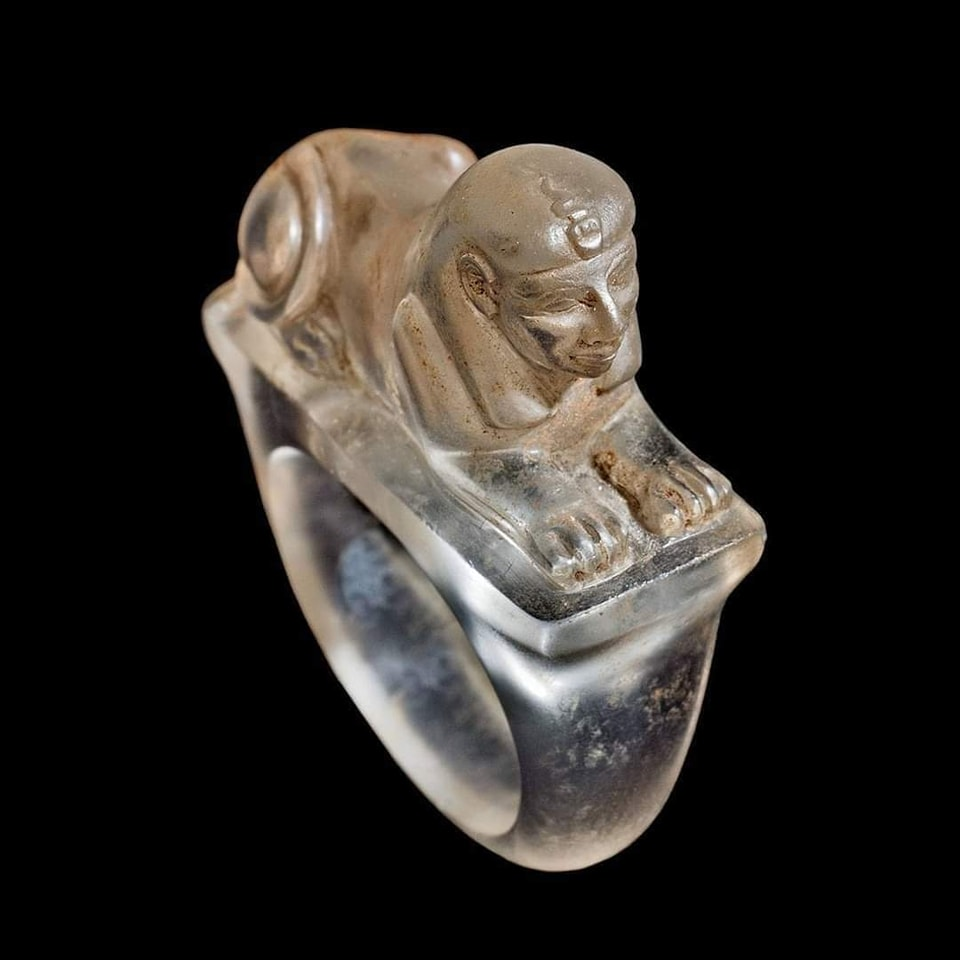Sphinx ring

Egyptian rock crystal Sphinx ring from the New Kingdom, Ramesside era, Dynasty 19-20 1295-1069 BC.
The Sphinx is a statue of a mythical creature with the body of a lion and the head of a human, carved from limestone
The design and implementation of the Sphinx is brilliant. Its tail rests characteristically on the outline of its right hind leg, around which it rests. Like most Egyptian sphinxes, the head in this example is covered by a mongoose headdress, here plain, and the uraeus, or sacred cobra, is placed in front of it, with the upper tail above it. Attention has been given to the detailed representation of the toes on the extended front legs. The round face of the sphinx is dominated by large, almond-shaped eyes, set in fairly deep sockets with slit eyebrows. The nose shows broad wings, its nostrils are pierced and prominent. A weak nasolabial sulcus, or depression, down the center of the nose separates it from the wide, horizontally aligned mouth with full lips. The resulting physiognomy gives the impression of strength and power, devoid of the soft, perfect features that often characterize the faces of such mounted beasts. This impression contributes greatly to the impact inherent in this miniature jewel-like masterpiece.

While it is difficult to compare the face of our Sphinx, despite its inherent monumentality, with much larger stone examples suggestive of the pharaoh's identity, its rounded face and imperfect features continue to stand out. Characteristics found in some representations of Ramesses II.
Rock crystal, perhaps called hedej in hieroglyphics, was a highly sought-after stone for amulets and miniature luxury vases, but its use, due to its rarity, was very restricted.
The ancient Egyptians were very fond of wearing finger rings. It is likely that this ring possessed protective qualities, given that the ancient Egyptian Sphinx was essentially one of the most powerful protective creatures in ancient Egyptian mythology.
Source: websites

